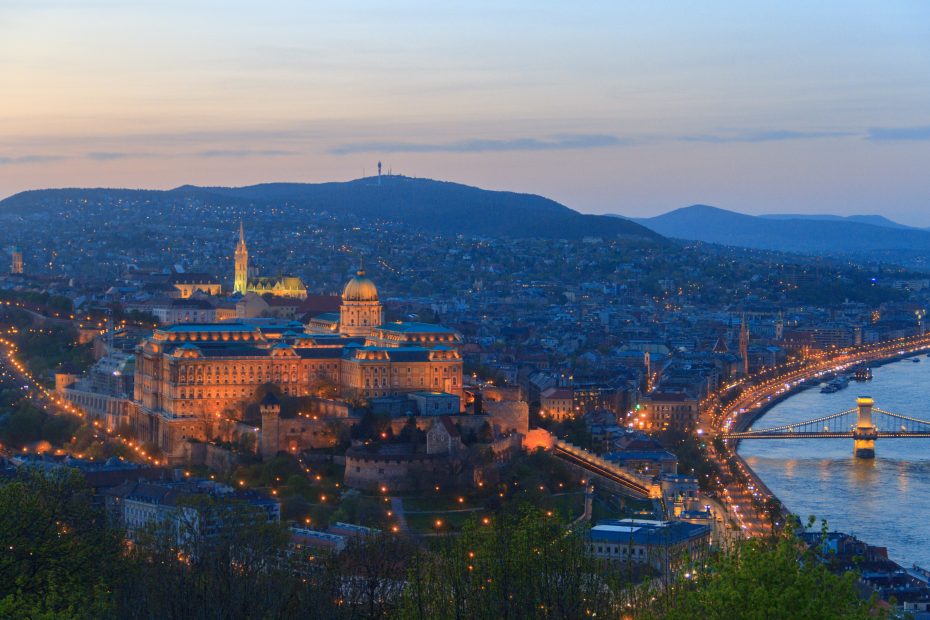Budapest is a fascinating city of two halves. Divided by the Danube River, Buda represents the city’s historic side with its hilltop locale and medieval architecture. Pest, on the opposite bank, is the lively modern center packed with shops, restaurants, and nightlife venues. Though distinct, these two zones complement each other perfectly to form one of Europe’s most captivating capital cities. Let’s take a closer look at what makes the Buda-Pest duo so dynamic.
Table of Contents
A Tale of Two Cities
Budapest was born from the merging of three independent cities – Buda, Pest, and Óbuda – in 1873. But the story begins much earlier.
From Humble Beginnings
The area’s first settlers were Celtic tribes, followed by the Romans who built aqueducts and amphitheaters. After the Roman Empire’s decline, the Magyars arrived and established control.
Foreign Rule to Unification
For 150 years, the Ottoman Empire occupied Buda and Pest. After their expulsion, Habsburg rulers swooped in until the Hungarian Revolution of 1848. Just 25 years later, unification created modern-day Budapest.
With grand avenues and ornate buildings constructed around the turn of the 20th century, the new capital grew rapidly in wealth and prominence. Though ravaged by World Wars I and II, present-day Budapest stands proudly as Hungary’s beating heart.
Buda: Hilltops and History
Perched upon hills overlooking the Danube’s west bank, Buda feels almost frozen in time. Wandering cobblestone streets lined with Baroque and Medieval structures, it’s easy to imagine you’ve stepped back a few centuries. Let’s explore some of Buda’s highlights.
A Castle Fit for Kings
Castle Hill is an undulating district home to Buda’s most iconic sites. Founded in the 13th century, vast Buda Castle houses the National Gallery and Budapest History Museum. Nearby, 14th-century Matthias Church dazzles with its colorful tiled roof and interior frescoes.
River Views with Medieval Flair
Crowning Castle Hill is the towered neo-Gothic Fisherman’s Bastion, offering stunning panoramas over the Danube. Named after the guild who defended this area in the Middle Ages, it’s the perfect photo op. Wander the bastion’s arcades and courtyards to fully appreciate this fairytale-esque creation.
Pest: Urban Energy
Crossing over to the east bank, Pest provides a striking contrast to Buda with its flat terrain and cosmopolitan vibe. Urban explorer’s, get ready!
Grand Architecture and People-Watching
Andrássy Avenue is Pest’s Champs-Élysées, flanked by high-end shops and restaurants. Strolling down this tree-lined boulevard, you’ll reach Heroes’ Square with its commanding Millennium Monument and museums. It’s also a prime spot for people-watching!
Taking the Waters
Budapest sits atop a network of natural hot springs, so you absolutely must visit one of Pest’s famous thermal baths. The palatial Széchenyi Baths are especially atmospheric with indoor and outdoor pools in a beautiful Neo-Baroque building.
Uniting the Banks
Though distinct in character, Buda and Pest beautifully intertwine through connecting bridges and efficient public transportation.
Across the Mighty Danube
No bridge is more iconic than the 19th century Chain Bridge linking Castle Hill and downtown Pest. Take a leisurely stroll across for those perfect Instagram shots!
Getting Around with Ease
Budapest’s metro, buses, trams, and trolleybuses make criss-crossing between Buda and Pest a breeze. Hop aboard and embrace the adventure!
More to Explore
Beyond its twin downtown districts, Budapest offers even more to experience.
Cocktails and Communism
For nightlife, head to the Jewish Quarter’s vibrant ruin bars – eclectic bars set in crumbling courtyards. The Opera House dazzles inside and out, while Memento Park displays relics from Hungary’s communist past.
Taking the Waters
Budapest isn’t called the “City of Spas” for nothing! After a long day exploring, indulge in a relaxing soak at one of Pest’s many Turkish-era thermal baths.
Satisfying Your Appetite
Budapest cuisine reflects Hungary’s rustic traditions. Warm up with goulash, a meaty stew, and lángos, salty deep-fried dough. Dobos Torte, a layered chocolate cake, makes the perfect sweet ending.
Bringing It All Together
With its rich history, stunning architecture, cultural sights, thermal spas, and buzzing nightlife, the twin cities of Buda and Pest form one of Europe’s most beguiling capitals. Each side brings distinct and complementary flavors that, together, make Budapest a world-class city break destination. Ready to experience this dynamic duo for yourself?
Frequently Asked Questions
What are the main differences between Buda and Pest?
Buda is hillier, more historic, and slower-paced than urban Pest. Buda is home to medieval sites like Buda Castle and Fisherman’s Bastion, while Pest offers cosmopolitan energy with sites like Andrássy Avenue and Heroes’ Square.
How can I travel between Buda and Pest?
Connecting bridges like the Chain Bridge allow walking between the two sides. Public transport like metro, bus, tram and trolleybus make crisscrossing efficient.
What traditional foods should I try in Budapest?
Classic Hungarian foods to savor include goulash (hearty meat stew), lángos (fried dough), and Dobos Torte (layered chocolate cake).
What are top attractions and activities in Budapest?
Must-see attractions include Castle Hill, Fisherman’s Bastion, Andrássy Avenue, and Heroes’ Square. Thermal spa visits, river cruises, ruin bar crawls, and opera at the Opera House are top activities.
How many days do I need to fully experience Budapest?
At least 3 full days allows you to see the top attractions in both Buda and Pest. With extra time, you can indulge more in thermal baths, nightlife, day trips, and leisurely wandering.
